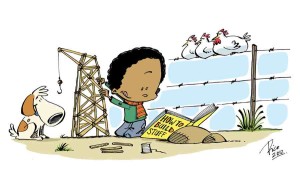 Have you noticed how naturally curious children are? Given a chance they will ask question after question! Do some of these sound familiar: “Why is the sky blue?”, “Why do people get sick?”, “How are cars made?”, “Why is there night and day?” Whatever they ask, children’s questions can create great starting points for discussion, exchanging ideas and finding out more about a topic together. In fact, you’ll find yourself asking questions too!
Have you noticed how naturally curious children are? Given a chance they will ask question after question! Do some of these sound familiar: “Why is the sky blue?”, “Why do people get sick?”, “How are cars made?”, “Why is there night and day?” Whatever they ask, children’s questions can create great starting points for discussion, exchanging ideas and finding out more about a topic together. In fact, you’ll find yourself asking questions too!
Your children’s questions also offer an opportunity for you to become a good reading model: using books to find information and then discussing what you have read together. Their questions give you the chance to explain how to use books to find answers and to explore our world. And, of course, you will be boosting their interest and empowering them with more knowledge at the same time!
You can use different kinds of books to explore topics in different ways. Here are a few examples.
* Realistic stories focus on real-life problems which the characters have to solve, like how to stop someone from being bullied, or how to escape a fire.
* Biographies tell the story of a real person, like a pop star or a famous leader, but are written by someone else. (An autobiography is a story about a person and written by them!)
* Traditional stories tell tales with a message or moral, like what happens if people pollute the Earth’s water and Mother Earth gets upset.
* Information books contain information and facts, for example, about the beliefs, rituals and practices of different religious groups, or how the stars and planets are formed, or where water comes from.
When you read storybooks you usually start at the beginning and read through to the end so that you get the whole story! Information books work differently. Here are some ideas for how to share them with children.
* On the cover. Read the book’s title and draw your children’s attention to the pictures on the cover. Can they use these to predict what the book is about? Remember to also find the author’s name – this helps to remind children that all books are written by real people just like them!
* What’s inside? Look at the contents page at the beginning of the book to help you choose sections that grab your children’s interest.
* Start, stop and skip. Start by reading a part of the book that interests your children. If you’ve found the information they were looking for, or if they ask new questions, or if something else in the book interests them more, stop reading and skip to another part.
* Different types of information. Pictures, photographs, maps, diagrams, tables and graphs offer as much food for thought as the words on the page. Spend time looking at these with your children and talking about them.
Whatever books you choose to explore with your children, enjoy the journey of discovery together! Visit ourRecommended Reads section for our favourite information books for children.

